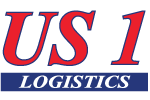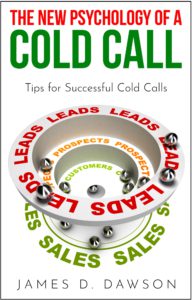“Sales isn’t just calling—it’s consistency. Here’s how to build a plan that sells for you.”
In the freight world, momentum doesn’t come from one good call—it comes from a system. Success isn’t about luck or being the loudest on the phone. It’s about what you do every day, how often you do it, and how well you track and tweak it.
Whether you’re a freight broker agent, drayage agent, or intermodal agent, waking up and “winging it” is the fastest route to burnout—and to inconsistent income. One week you’re slammed with leads, the next you’re scrambling for business. That kind of cycle isn’t sustainable.
What you need instead is a sales plan—a clear, repeatable game plan that transforms daily outreach into predictable, steady revenue. That means:
-
Setting weekly contact goals across LinkedIn, cold calls, and email.
-
Tracking conversion rates so you know what’s working.
-
Blocking time for lead follow-ups and client check-ins.
-
Reviewing your own performance like a coach reviews game tape.
The top producers in freight don’t chase—they execute. And it all starts with a blueprint that aligns effort with outcomes.
Want to build one that fits your mode, your market, and your goals? Let’s build a plan that keeps the phone ringing and the trucks rolling.
🎯 What Is a Freight Sales Plan, Really?
A freight sales plan isn’t a one-size-fits-all playbook. It’s your personal blueprint for growing your book of business, built around your mode, market, and goals. It should cover:
-
Your niche (e.g., reefer, flatbed, LTL)
-
Your ideal customer profile
-
Your outbound strategy (calls, LinkedIn, email)
-
Your inbound system (referrals, content, lead magnets)
-
KPIs (number of touches, conversion rate, revenue targets)
Think of it as your GPS—so you’re not just moving, but moving with purpose.
📞 Cold Calling: Still King, But Not Alone
Cold calling still opens doors—but only when paired with the right messaging, right timing, and the right mindset. It’s not about how many dials you make—it’s about what you say, when you say it, and how prepared you are when they finally pick up.
Smart truck freight brokers and freight agent brokers don’t just pick up the phone and hope for the best. They research the company, know the shipping lanes, anticipate pain points, and have a freight-specific question ready to start the conversation. That’s the difference between getting hung up on and getting a meeting.
Your cold call isn’t a pitch—it’s a probe. Your job is to qualify the lead fast, find the need, and earn the right to follow up.
Your goal each day should be crystal clear:
-
Set a call target: Whether that’s 20 or 50 dials, make it consistent.
-
Qualify leads quickly: Ask freight-relevant questions that reveal opportunity.
-
Track results: Know your conversion rate so you can improve it weekly.
Pro tip: Start your call with a question that’s specific to freight movement—it signals relevance and intent. Something like:
“Are you still handling outbound lanes from the Midwest region?”
This soft open feels conversational—not salesy. It invites them to share, and positions you as a resource, not a cold caller. Once you’ve got them talking, you’ve already won the hardest part. Now, let your value do the rest.
💬 LinkedIn: Build Visibility Between Dials
Most freight broker agents overlook LinkedIn—but it’s a silent salesman that works 24/7. Consistent posting, engaging with prospects’ content, and sending thoughtful connection messages build brand awareness fast.
Your goal:
-
Connect with 10 new shippers a week
-
Post valuable insights 2–3x weekly
-
Use content to warm up cold leads
✉️ Email: The Nurture Engine
Don’t let leads go cold. A good email sequence keeps you top-of-mind. Think short, relevant, and results-driven.
Your sequence might look like this:
-
Quick intro + one-liner case study
-
Pain-point insight + soft CTA
-
Social proof + link to connect
Your goal: Book at least 1 meeting per 25 emails sent.
🤝 Referrals: The Untapped Channel
Your current carrier and client network can be your best marketers—if you ask. Make referral outreach part of your plan, not an afterthought.
Your goal: Ask 2 existing contacts per week for introductions to similar companies or logistics managers.
📊 KPIs: Numbers That Drive Strategy
A plan without numbers is just a wish list. Every freight agent, including trucking agents and intermodal specialists, needs to track these basics:
-
Calls made
-
Emails sent
-
LinkedIn connections added
-
Meetings booked
-
Deals closed
-
Revenue per customer
These metrics show you what’s working—and what needs a tweak.
🚀 Your Next Step
Sales momentum isn’t magic—it’s math, multiplied by discipline. Think of it like this: every email, every call, every LinkedIn touchpoint is a data point. When done consistently and tracked properly, those touchpoints turn into conversations, which turn into quotes, which turn into loads.
But without a structured plan? You’re just spinning your wheels.
Whether you’re a freight broker agent building your first book or a freight agent broker looking to break through a plateau, a systemized sales approach is your growth engine. It’s not about doing more—it’s about doing the right things, on repeat, and measuring what works.
📊 Daily activity goals
📈 Weekly lead conversion tracking
🧠 Monthly review of what’s landing (and what’s not)
If you’re ready to build a system that scales—one tailored to your specific mode (reefer, LTL, drayage, hotshot—you name it), your region, and your capacity—I’ve got plug-and-play sales plan templates ready to go.
Message me. Let’s turn your hustle into measurable results. 💼📈


Recent Comments